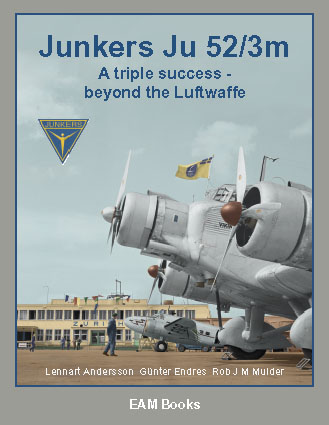Against overwhelming odds
On the afternoon of 13 April 1939, Junkers Ju 52/3m EU XIX "Chengtu" took off from Hanoi in French Indochina on the regular scheduled flight to Kunming in China. It was one of the Eurasia airline's ten aircraft of this type. The flight was under the control of Captain Johannes Rathje and the other crew members were radio operator/mechanic Oswald Ulbricht, and Chinese copilot Ding. Also on board were Captain Dieter Leiding, radio operator/mechanic Max Springweiler, and a Chinese passenger. The aircraft had yet to cross the Chinese border when it was spotted by a flight of Japanese bombers, which almost immediately began to pursue and open fire. Rathje's attempt to seek cover in a small cloud provided only temporary relief and when the cloud dispersed, the bombers started firing again, forcing him to make an emergency landing on a steep slope in a wild and remote mountainous area. The landing gear was torn off, the underside of the fuselage was damaged, propeller blades were bent, and bullet holes riddled the aircraft. Crew and passengers jumped out and sought shelter behind rocks and scrub. While jumping from the cockpit, Rathje broke his foot and upper arm. The Japanese continued to machine-gun the crashed aircraft and dropped a few small bombs but, luckily, these missed their target.

The aircraft was camouflaged with palm fronds and other greenery to hide it from the searching eyes of the Japanese bomber crews, and finding themselves so far from civilisation, the stranded men embarked on a five-day trek by foot, and later on horseback, to reach the nearest stop on the Hanoi-Kunming railway. Wracked by pain, Rathje had to be carried most of the way. Based on the crew's report, salvage seemed an impossibility, but Eurasia, which could ill afford to lose the Ju 52/3m, was reluctant to leave it to rot away. After much planning, Fritz Schneider, Eurasia's technical director, set off from Lao Kai to the crash site on 19 June, with 33 horses and mules, and fourteen bearers carrying spare parts, tyres, landing gear axles, corrugated duralumin sheets and more. After successfully negotiating steep climbs, treacherous mountain and jungle tracks, heavy rainstorms that turned the earth into a muddy morass, the caravan reached the aircraft four days later. EU XIX lay just 300-400m on the Chinese side of the border.

If you would like to find out how the story ended and know more about the Junkers Ju 52/3m, be prepared to order this book when it becomes available:

|





